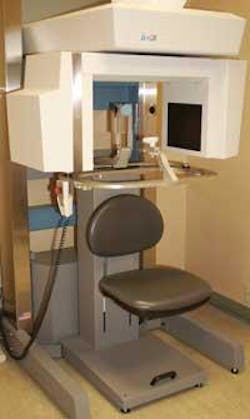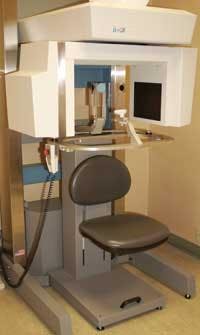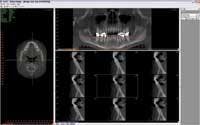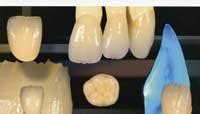Advances in dental lab technology
Albert Einstein disliked computers. In fact, he thought they were stupid. “They can only give answers,” he mused. “Asking questions is much more important.” The man who brought us relativity also had a practical definition for insanity: doing the same things over and over again while expecting a different result. These two themes will guide our discussion of dental laboratory technology.
Ask questions that lead to technology applications that enhance patients’ health, and find ways to do things better than older methods provide. As Dr. L. D. Pankey told me on my first visit to the Institute 20 years ago, “When it comes to implementing what is new into your practice, try not to be the first on your block - but don’t be the last either.” Laboratory technology updates impact us in three main areas: materials, manufacturing, and the human interface. Let’s see how recent changes impact our practices.
■Materials
The International Dental Show this spring in Cologne, Germany, highlighted some of the newest materials and manufacturing technologies. The biannual meeting - the largest dental meeting in the world - gave us a glimpse of where manufacturers, suppliers, and equipment developers see dentistry and the laboratory industry moving. One of the most dramatic changes continues to occur in the increased use of all-ceramic restorative systems. The porcelain-fused-to-metal restoration continues to dominate, but is declining. The strength of ceramic choices for single restorations and frameworks used to support bridgework is exceptional. Optical effects of porcelain systems and the ease of material manipulation to simulate natural tooth structure have never been better. The esthetic revolution has met the technology revolution. Pressed ceramics, pressed-to-metal, sintered, computer-milled, and feldspathic systems provide solutions that extend beyond the traditional bread-and-butter pfm. Even dentures are created to be a continuous shade throughout and esthetic - even after adjustment and reshaping. The material pigments resulting in the value, hue, and chroma run continuously within the teeth.
The impact in our practices has been largely esthetic. Patient and professional demand for highly esthetic and naturally beautiful restorative solutions is higher than ever. The strength and handling properties of material choices will continue to make dentistry easier for us. Of course, preparation design, esthetic demands, and structural limitations still play roles. Technicians have never been more important parts of dental teams. As unpaid consultants on case planning, material selections, and procedures, they are true partners in the dental restorative arena. Technicians are professionals and we should treat them as colleagues. With less emphasis on lab work in dental school, new dentists are realizing lab tech counsel is mandatory.
But don’t think all labs and technicians are equal. Three states require that a Certified Dental Technician be on staff in every dental lab. Of the more than 12,000 estimated dental labs in the United States, fewer than 400 have undergone rigorous benchmarking on policies, procedures, and material handling that is required to become a nationally Certified Dental Lab. Both technician and laboratory certification fall under the auspices of the National Dental Laboratory Association. In Texas, South Carolina, and Kentucky, state regulations require employment of a CDT before granting a license to operate. Dentists need to develop a political environment that fosters recognition of the CDT designation in state dental practice acts. This could be accomplished by requiring dental laboratories to employ a CDT in each specialty area provided by the lab in order to operate. This would elevate public awareness of the occupation and recognize the value of dental technicians who enhance their knowledge and skill through written and practical testing and continuing education.
Off-shore and foreign competition in dental laboratory restorations is not new. Nevertheless, an increase in restorations has fostered a new awareness of the subject within the industry, profession, and government. The oversight of foreign dental laboratories relative to U.S. imports has seen increased enforcement. The Federal Drug Administration has the authority to inspect foreign and domestic dental laboratories and require them to comply with Quality System/Good Manufacturing Practices as addressed in the Code of Federal Regulations, Part 820. Under labeling requirements, a laboratory must indicate the point of origin for manufacture, distribution, or both. In essence, “manufacture” indicates the laboratory where the restoration was created. Dentists need to inquire whether their dental laboratories are FDA-compliant and use quality-assurance processes. Incidentally, no formal regulation suggests that dental clients must disclose points of origin information to dental patients.
■ Manufacturing
The Chicago Midwinter Meeting has partnered with the National Association of Dental Labs for an educational forum for dental professionals, including technicians. A plethora of CAD/CAM and other manufacturing technologies continue to surface and will impact our practices. Norm Weinstock, chairman of Zahn Dental Supply, a division of Sullivan-Schein Dental, shared the following data regarding manufacturing advancements that are available to dental labs: fifteen CAD/CAM systems - some for copings and frameworks, some for finished restorations - three laser-sintering systems, 18 bench scanners, custom-milled abutment and stent manufacture, electroforming, rapid-wax prototype, plasma, and several laser-welding systems.
The investments labs would be required to make are daunting. Brent Rosso, RDT, vice president of Technical Services for Dental Technologies Inc., said that labs will choose technologies that are more likely to provide adequate returns on investments. Only the largest labs and lab groups will be able to afford the technologies that continue to develop. A $250,000 CAD/CAM machine acquired to produce copings had better produce around the clock if anyone hopes to profit from it.
David Lesh, CDT, of Dale Dental in Dallas, helps smaller labs that can’t afford the technology by providing fractional ownership and outsourcing. Lesh mentioned that process technologies - although often forgotten and overlooked - can provide improved consistency, profitability, and efficiency for restorations produced in a lab. Such technologies - although less exciting than CAD/CAM - include computer-controlled mixing and batching units, laser welders, automated casting machines, ISO protocol, and more.
■ Human Interface
Doctor, laboratory, and technician communication and interface are more advanced technically than they have ever been. Of course, computers, cell phones, PDAs, fax machines, and the Internet have dramatically increased the real time availability of people and information. Some of the recent developments in treatment-planning software and virtual classrooms have significantly increased the efficacy of these efforts.
Seattle’s Dr. Steve Carstensen, a visiting faculty member and board of director of The Pankey Institute, says, “When I sit with a person to discuss his or her dental health needs, I am constantly aware that my words are, at best, poorly understood and retained. There is continuous effort to make the language match the person, but with such a low percentage of patients understanding the words, I must find other ways to get the message across. Technology can help.
“Turning mysterious words and unseen conditions into well-presented visual arts can be an advantage in helping patients take ownership. With pictures, treatment choices become real to patients. There must be balance, however. It’s easy to blow them away with a fancy presentation or cool gadget, but the focus must always be on the patient and his or her needs. Technology must serve this. It’s not the picture that matters to them, it is what you tell them, supported by the picture. It’s about trust.”
Specialists, dental lab technicians, and dentists can review findings, discuss options, and formulate treatment plans in real time with these advancements. At The Pankey Institute, a virtual classroom platform via the Internet allows students to stay connected like never before. In real time, presentations can be made, discussions can be had, and streaming video that enhances learning can run. Case-review and treatment-planning workshops allow others to see the options. Affordable digital photography, esthetic modification software, e-mail, and the Internet have shrunk time and space. Now, new generations of planning software allow us to do interdisciplinary planning and presentations for patients.
The Pankey Institute has advanced its digital-imaging capabilities with the acquisition of a 3-D Cone Beam Imaging System. This system produces thorough, three-dimensional views of all oral and maxillofacial structures, allowing enhanced diagnosis and treatment planning. The images are more easily acquired with improved accuracy than images produced by more traditional panorex and transcranial radiograph technology.
Here’s how it works. Patients are seated in an open environment. The machine, which resembles a traditional panorex, captures the natural orientation of the anatomy. The compact design and rapid image-acquisition capabilities enable the dental CT scan to capture 3-D images within 20 seconds. Data transfer to a local computer takes less than a minute. The completed scan is displayed on the monitor, and the interactive software allows the image to be formatted easily and the desired “slices” to be selected for immediate viewing.
Of particular interest is the ability to image the articular eminence and condylar anatomy, and then isolate images specific to the medial or lateral pole of the condyle. Users may export data to a variety of implant treatment planning and 3-D viewing software programs. This software provides immediate, 3-D digital reconstructions of a patient’s mouth, face, and jaw areas, which can be viewed on a computer screen or printed in full color.
The continued evolution of materials, manufacturing processes, and human interfaces alters the landscape for dentists and patients. Dental laboratory technicians, who are professional colleagues and team members, are more important, too. Dentistry, as a profession, is in a pivotal time. Commercial influences and marketed products and procedures are affecting us as they have our sisters and brothers in medicine.
Einstein was right: We should ask good questions and refrain from doing things over and over while expecting new results. Search for unbiased information when you ask, and seek conflict-free continuing education that is in the best interests of patients and their long-term health. Dentistry is a noble profession. Technological advances can help us serve our clients better and close the gap between good dentistry and good service.
Dr. Mark T. Murphypractices restorative dentistry in Rochester Hills, Mich., and is the director of professional relations at The Pankey Institute, where he also is on the board and visiting faculty. He is the former director of Continuing Education at Dental Technologies Inc. Reach him via e-mail at [email protected].




